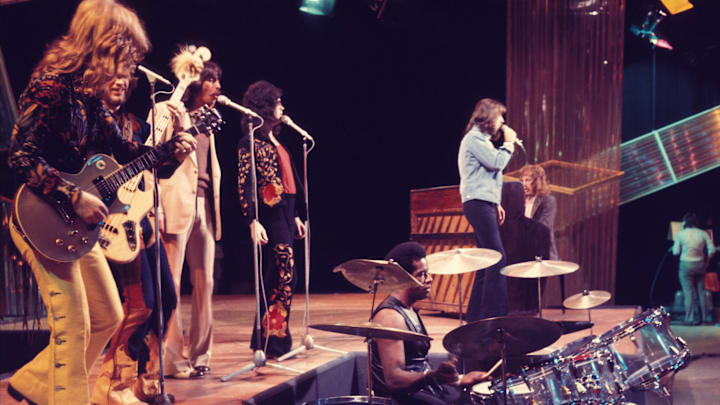I don’t know about you, but when I am looking for cutting-edge, rock & roll analysis, I go to trusted sources. Like Forbes Magazine. That’s why when Forbes came out with their “30 Greatest Rock & Roll Bands of All Time” earlier this year, I was all over that puppy.
As it turns out, the list is just fine. Fairly standard entries for the most part. One or two oddball choices. Another one or two inexplicable omissions. But mostly typical. For some reason, the thing that jumped out at me most while perusing the Forbes list was the makeup of the selections. By that, I mean the roles of each band member – not the actual makeup worn by said band members (though Kiss is on the list.)
By my count, almost 80 percent of the bands had a traditional front man. (Or, in one case – and only one case – a front woman.) They had a standard issue, high-powered vocalist who handled the vast majority of the lead singing. In some – maybe many – of the bands, another member would take the occasional lead. But there was still one dominant lead singer. From Robert Plant (Led Zeppelin was No. 1 on the list) to Steven Tyler (Aerosmith was No. 30), there was a voice and often a look that announced the band’s presence.
Classic rock bands that featured more than one lead singer
Even in bands that shared vocals, there was typically a rough pattern that emerged. So Mick Jones might sing a few Clash songs, but Joe Strummer still took the lead on most of them. The same applied to classic-era Pink Floyd, with Roger Waters assuming more and more of a lead vocalist posture despite David Gilmour’s occasional vocals. Eric Clapton sang a few Cream songs, but Jack Bruce sang most of them.
The Clash, Pink Floyd, and Cream also turned the mic over to other members for a one-off every so often, but none of those bands boasted three or more vocalists who regularly sang lead.
But there were a few bands that did. That’s what we’re looking at today. Classic rock bands that had at least three singers offered a significant number of leads.
What defines “significant number?” Well, me, ‘cause I’m the one writing this. But here’s a for instance or two to give you some insight into how I made my choices. Roger Taylor and Brian May both sang some leads for Queen. They may have even contributed a “significant” number of songs. But Queen isn’t here. Freddie Mercury’s voice and presence are so overwhelmingly associated with Queen that I consider them a band with one lead vocalist, and a couple of other guys who occasionally sang.
Bands like the Moody Blues and Jefferson Airplane didn’t make my list for a different reason. They each had plenty of members who could – and did – sing leads. Justin Hayward sang most of the Moody Blues' best-known songs, but Ray Thomas, Mike Pinder, and John Lodge all sang leads for the band during their golden years.
Grace Slick and Marty Balin were the primary vocalists for Jefferson Airplane, but Paul Kantner and Jorma Kaukonen took the lead on a few songs. But in both those bands, if one of the primary leads wasn’t singing, the band tended toward harmony. So Paul Kantner sang all the time, but rarely entirely by himself. I consider bands like that to have a lot of good harmonizing singers, as opposed to three or more lead singers.
And I’m not talking here about bands who simply got a new singer when one guy left. So there’s no Deep Purple. No Black Flag. No bands with any colors in their name. (though we do have multiple animals, though not the band The Animals.)
OK – that’s who’s not on the list. Here’s who is. A dozen classic rock bands which featured three (or more) lead singers:
